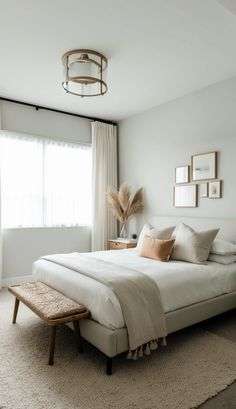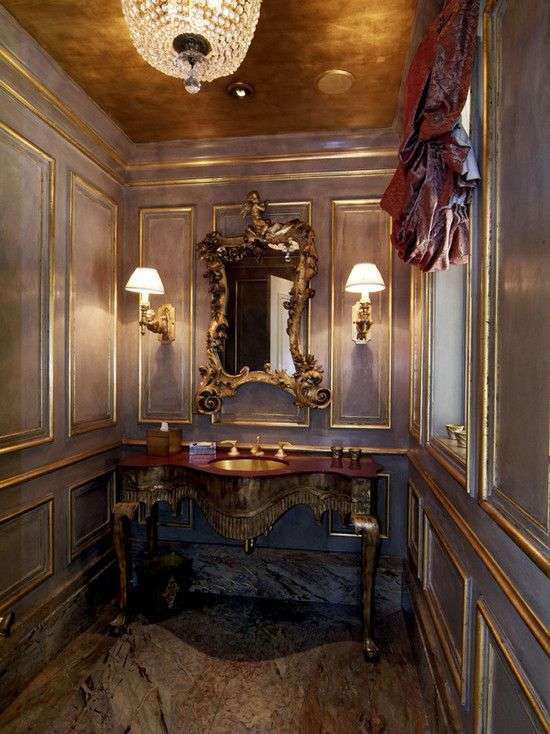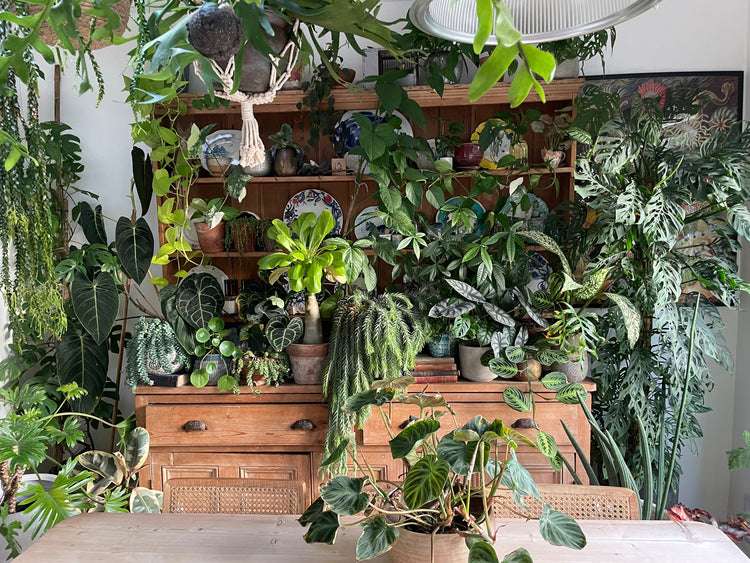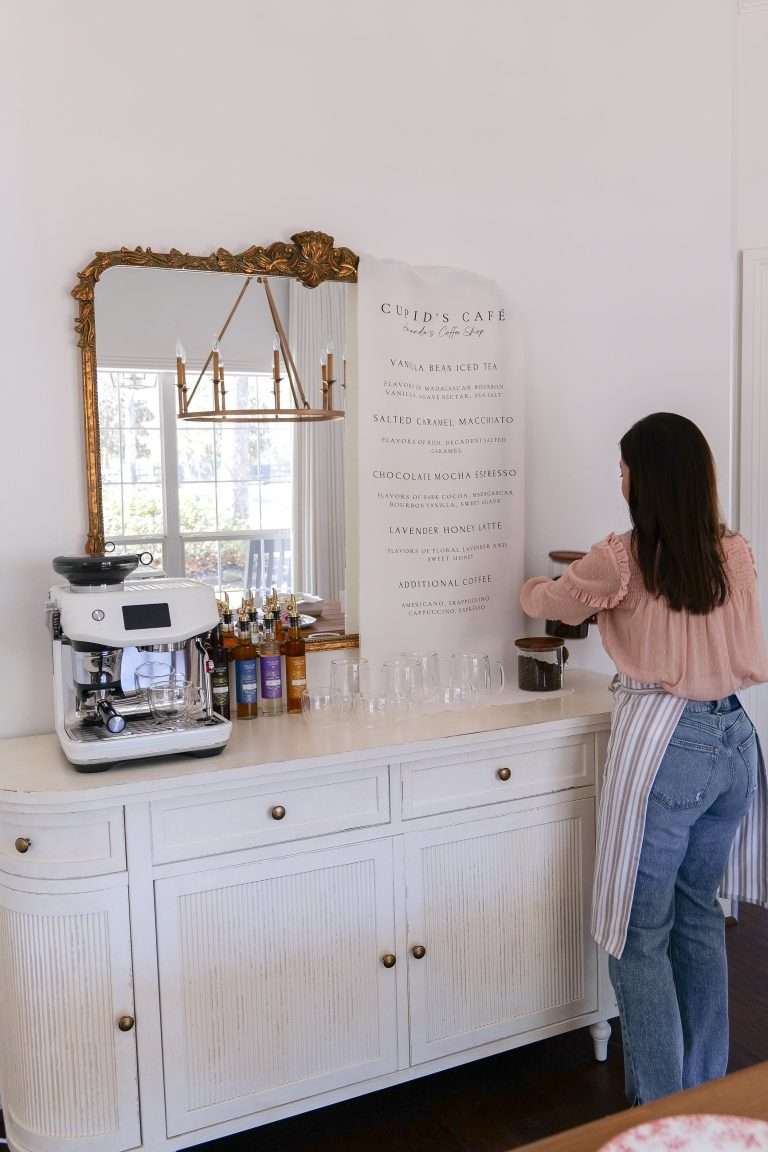18 Cheap DIY Furniture Ideas That Are Full of Aesthetic Charm
Creating beautiful furniture doesn’t have to be expensive. DIY projects enable you to craft unique pieces while staying within budget.
In this blog post, you’ll discover 18 affordable DIY furniture ideas that blend creativity and style seamlessly. Whether you want to elevate your living space or relish the satisfaction of building something with your hands, these projects deliver aesthetic charm and cost-effectiveness.
Each idea enhances your home’s character, from repurposed materials to simple designs. Immerse yourself in DIY and transform your space with these budget-friendly furniture solutions. Are you ready to be inspired? Let’s explore these innovative ideas that showcase how stylish furniture can be beautiful and affordable.
Pallet Coffee Table
Transform old pallets into a chic coffee table. This budget-friendly DIY idea adds rustic charm to any living space. Create unique furniture pieces with minimal effort and cost.
Are you looking for a stylish yet affordable piece of furniture to elevate your living room? A Pallet Coffee Table might be the perfect DIY project for you. Not only is it budget-friendly, but it also adds a rustic charm to your space. Whether you’re a DIY enthusiast or a beginner, creating your own pallet coffee table can be both fun and rewarding.
Materials Needed
Before diving into the project, gather the following materials:
– Wooden Pallets: You’ll need two or three, depending on your desired height.
– Sandpaper: For smoothing the wood.
– Stain or Paint: To give your table a finished look.
– Paintbrushes: For applying stain or paint.
– Screws and Screwdriver: To attach the pallets together.
– Caster Wheels: Optional, for added mobility.
– Glass Top: Optional, for a sleek finish.
Step-by-step Guide
Here’s a simple guide to help you create your pallet coffee table:
1. Select Your Pallets: Choose pallets that are in good condition. Avoid ones with too many cracks or splinters.
2. Prepare the Wood: Sand the pallets thoroughly to remove any rough edges. This step is crucial for a smooth finish and to avoid splinters.
3. Stain or Paint: Apply a coat of stain or paint to the pallets. This not only enhances the appearance but also protects the wood.
4. Assemble the Table:
– Place one pallet on top of the other. If you’re using three pallets, stack them accordingly.
– Secure them together using screws. Make sure they are tightly fastened.
5. Add Caster Wheels (Optional): Attach caster wheels to the bottom pallet if you want your table to be mobile. This is particularly useful if you like to rearrange your furniture frequently.
6. Install the Glass Top (Optional): For a more polished look, place a glass top on the table. Ensure it’s the right size and securely positioned.
Each step brings you closer to a beautiful, functional piece of furniture. Imagine the satisfaction of telling your guests that you made it yourself!
What’s stopping you from starting this simple yet rewarding project? Dive into it this weekend and transform your living space with a touch of DIY creativity.
Bookshelf Ladder
Are you looking for a unique and stylish way to display your books? A bookshelf ladder might be the perfect solution. This DIY project is not only affordable but also adds a touch of rustic charm to any room. Imagine a ladder leaning against your wall, showcasing your favorite books and knick-knacks—functional and beautiful! Let’s dive into the details of creating your own bookshelf ladder.
Choosing The Right Ladder
The first step in creating your bookshelf ladder is choosing the right ladder. You can find old ladders at flea markets, garage sales, or even your own garage. Look for a ladder that is sturdy and in good condition. Wooden ladders are ideal for this project because they are easy to paint or stain.
Consider the height and width of the ladder as well. It should fit comfortably in the space you have in mind, and the rungs should be wide enough to hold your books. Also, think about the aesthetic you want to achieve. A vintage ladder can give a rustic feel, while a fresh coat of paint can make it look modern and chic.
Assembly Instructions
Once you have chosen your ladder, it’s time to assemble your bookshelf. Here are some simple steps to follow:
- Clean and Prep: Make sure your ladder is clean and free of any dust or debris. Sand any rough spots to ensure a smooth finish.
- Paint or Stain: If you want to change the color of your ladder, now is the time to paint or stain it. Use a brush to apply your chosen finish evenly and let it dry completely.
- Attach Shelves: Measure the width of your ladder rungs and cut wooden planks to fit. These planks will serve as the shelves. Secure the planks to the rungs using screws or nails. Ensure they are level and sturdy to hold your books.
- Secure the Ladder: To prevent the ladder from slipping, attach rubber feet to the bottom. You can also secure the top of the ladder to the wall with brackets for extra stability.
- Style Your Bookshelf: Once your ladder bookshelf is assembled, it’s time to style it. Arrange your books and decorative items on the shelves. Mix up the arrangement with both vertical and horizontal stacks of books for an eye-catching display.
Creating a bookshelf ladder is a fun and rewarding DIY project. It combines functionality with a unique aesthetic appeal. Have you ever tried making your own furniture? What other DIY projects are you excited to tackle? Share your thoughts and ideas in the comments below!
Cinder Block Bench
Transform your outdoor space with a cinder block bench. It’s affordable and easy to make. This DIY project will add a rustic charm to your garden or patio. You only need a few supplies and some basic tools.
Gathering Supplies
First, gather your supplies. You will need cinder blocks and wooden planks. Choose sturdy planks that fit into the holes of the cinder blocks. Make sure you have enough blocks for the bench’s length and height.
Don’t forget sandpaper to smooth the wood. Paint or sealant will protect the bench from weather. A measuring tape and a level will ensure your bench is even.
Building Process
Start by arranging the cinder blocks. Place two blocks side by side for the bench’s legs. Stack another two blocks on top for height. Repeat this on the other side.
Next, slide the wooden planks through the holes of the cinder blocks. Ensure they are even and stable. Use the measuring tape to check the length. Sand the planks for a smooth finish.
Apply paint or sealant to protect the wood. Let it dry completely before using your new bench.
Crate Nightstand
Transform a wooden crate into a stylish nightstand with ease. This budget-friendly DIY project adds charm to any bedroom. Simple and aesthetic, it’s one of 18 cheap DIY furniture ideas.
Creating your own furniture can be incredibly rewarding and surprisingly affordable. One standout project is the Crate Nightstand. This DIY piece not only adds a rustic charm to your bedroom but also offers ample storage space. Imagine waking up and having your favorite book and a cup of coffee right by your side. Sound good? Let’s dive into how you can create your own Crate Nightstand.
###
Materials List
To get started, you’ll need a few basic supplies. Here’s what you’ll need:
– Wooden crates (2-3 depending on your desired height)
– Sandpaper
– Wood stain or paint (your choice of color)
– Paintbrushes
– Screws or nails
– Drill or hammer
– Wood glue
– Optional: Decorative knobs or handles
Gather these materials, and you’re already halfway to a stylish new nightstand!
###
Assembly Steps
Now that you have everything you need, let’s get into the fun part—assembly!
1. Prep the Crates:
Start by sanding down any rough edges on your wooden crates. This makes them safe to touch and gives you a smoother surface for painting or staining.
2. Stain or Paint:
Apply your chosen wood stain or paint. This is where you can get creative. Do you want a natural wood look or a pop of color? The choice is yours. Let it dry completely.
3. Arrange the Crates:
Once dry, arrange the crates in the configuration you prefer. You can stack them vertically for a taller nightstand or side by side for a wider one.
4. Secure the Crates:
Use wood glue to attach the crates together. For added stability, drill screws or hammer nails at key points where the crates touch. This ensures your nightstand is sturdy.
5. Add Decorative Touches:
If you’re feeling fancy, add decorative knobs or handles to the front of the crates. This adds a unique touch and makes it easier to open and close the crates.
6. Final Touches:
Place your new nightstand beside your bed and decorate it with your favorite items. A lamp, a small plant, or a stack of books can add the perfect finishing touch.
Creating a Crate Nightstand is not only budget-friendly but also allows you to infuse your personality into your living space. Have you tried making your own furniture before? What other DIY projects are you excited to tackle? Share your thoughts and experiences in the comments below.
Pipe Shelving Unit
Building a pipe shelving unit is a fantastic way to add a modern and industrial touch to your home. This DIY project is not only cost-effective but also highly customizable. You can adjust the design to fit your space and storage needs perfectly. The unique combination of metal pipes and wooden shelves brings both style and functionality to any room.
Tools Required
To build a pipe shelving unit, you need a few basic tools. These tools will help you measure, cut, and assemble the materials efficiently.
- Measuring tape
- Pipe cutter
- Drill with bits
- Screwdriver
- Wrench
- Sandpaper
- Level
Construction Tips
Start by measuring the space where you plan to install the shelving unit. This step ensures that your shelves will fit perfectly. Next, cut the pipes to the desired lengths using a pipe cutter. Ensure the cuts are clean and even.
Assemble the frame by connecting the pipes and fittings. Use a wrench to tighten the connections securely. Attach the wooden shelves by drilling holes in the wood and securing them to the pipes with screws. Sand the edges of the wood to remove any rough spots.
Use a level to make sure the shelves are straight. Adjust as needed before securing everything in place. Finally, consider painting or staining the wood to match your decor. This adds a personalized touch and protects the wood from wear.
Wooden Headboard
Creating a unique and personalized bedroom doesn’t have to break the bank. One way to add character and style to your space is with a DIY wooden headboard. This project is not only budget-friendly but also provides a fantastic opportunity to unleash your creativity. Whether you are a seasoned DIY enthusiast or a beginner, crafting your own wooden headboard can be a rewarding experience. Here’s how you can get started.
Material Selection
The first step in creating your wooden headboard is selecting the right materials. You want something sturdy but affordable. Consider these options:
- Pine Wood: Affordable, easy to work with, and readily available at most home improvement stores. Its light color makes it easy to stain or paint.
- Pallet Wood: Perfect for a rustic look. Pallet wood is often free or very cheap. Just ensure it’s clean and free of pests.
- Plywood: A versatile option that can be cut to any size. It’s great for a minimalistic, modern design.
Think about the aesthetic you want to achieve and choose materials that align with that vision. Personally, I once used reclaimed barn wood, and the natural weathering added a unique charm to my room.
Diy Instructions
Ready to get started? Follow these simple steps to create your wooden headboard:
- Measure Your Bed: Determine the width of your bed to ensure your headboard fits perfectly. Add a few inches on each side for a more dramatic look.
- Cut the Wood: Cut your chosen wood to the desired dimensions. If you don’t have a saw, many hardware stores offer cutting services.
- Sand the Edges: Smooth any rough edges with sandpaper. This step is crucial for a polished finish and to avoid splinters.
- Assemble the Pieces: Lay out your wood pieces on a flat surface. Use wood glue and clamps to secure them together. Once dry, reinforce with screws or nails.
- Finish: Apply your chosen finish. Stain for a natural look, paint for a pop of color, or leave it raw for a rustic vibe.
- Mount: Attach your headboard to the wall or bed frame. Wall mounting can be done using brackets and screws for stability.
As you work through these steps, don’t be afraid to add your own personal touch. Maybe you want to add some built-in shelving or hooks for functionality. Or perhaps a stencil pattern for a bit of flair. Remember, the beauty of DIY projects is the ability to make them uniquely yours.
Have you ever tried a DIY furniture project before? What was the most surprising thing you learned? Share your experiences and thoughts in the comments below – we’d love to hear from you!
Industrial Pipe Table
Creating your own furniture can be both satisfying and cost-effective. One popular DIY project is the Industrial Pipe Table. This piece is not only affordable but adds a unique, modern look to any space. Follow these steps to create your own Industrial Pipe Table.
Necessary Materials
- Wood tabletop (size of your choice)
- 4 Industrial pipes (for legs)
- 4 Pipe flanges
- 8 Screws
- Sandpaper
- Wood stain or paint
- Paintbrush
Assembly Instructions
First, sand the wood tabletop until smooth. This ensures a nice finish.
Next, apply wood stain or paint to the tabletop. Let it dry completely.
Now, attach the pipe flanges to the four corners of the tabletop. Use screws to secure them tightly.
Screw the industrial pipes into the flanges to form the legs. Ensure they are firmly attached.
Your Industrial Pipe Table is now ready. Place it in your desired location and enjoy its aesthetic appeal.
Wine Crate Coffee Table
Create a stunning wine crate coffee table with minimal effort. It’s an affordable and stylish addition to any living room. Perfect for budget-friendly DIY furniture enthusiasts.
Creating a coffee table from wine crates is a fantastic way to add a touch of rustic charm to your living room without breaking the bank. Imagine sipping your morning coffee next to a piece of furniture you crafted yourself. It’s not just a table; it’s a conversation starter, an accomplishment, and a unique addition to your home decor. Let’s dive into how you can make your very own Wine Crate Coffee Table.
Supplies Needed
Before you begin, gather all the necessary supplies. Here’s a list to get you started:
- 4 wooden wine crates
- Sandpaper (medium and fine grit)
- Wood screws
- Drill
- Wood stain or paint (optional)
- Paintbrushes
- Protective finish (like polyurethane)
- 4 caster wheels (optional)
- 1 wooden board (to fit the center space)
- Measuring tape
Having these supplies on hand will make your project go smoothly. Plus, it’s always good to have a little extra of everything in case of mistakes.
Step-by-step Assembly
Crafting your Wine Crate Coffee Table is easier than you might think. Follow these steps to bring your DIY project to life:
- Prepare the Crates: Start by sanding each wine crate with medium-grit sandpaper to remove rough edges. Follow up with fine-grit sandpaper for a smooth finish.
- Arrange the Crates: Place the crates in a rectangular or square formation, with the open side facing outward. This will create a central space where you can place a wooden board later.
- Secure the Crates: Using a drill and wood screws, attach the crates to each other. Ensure they are aligned properly to avoid any wobbling.
- Fit the Center Board: Measure the central space and cut a wooden board to fit. This will serve as the table’s middle support. Secure it with screws from underneath.
- Optional Wheels: If you want mobility, attach caster wheels to the bottom corners of the table. This makes it easy to move around your living room.
- Stain or Paint: Apply wood stain or paint to the crates, depending on your desired look. Let it dry completely before adding a protective finish.
- Apply Finish: Once the stain or paint is dry, apply a protective finish like polyurethane. This will enhance durability and give your table a polished look.
And there you have it! Your very own Wine Crate Coffee Table, ready to add charm and functionality to your living space.
Ever thought about how simple materials can be transformed into beautiful furniture? With just a bit of effort, you’ve created something that’s not only useful but also a reflection of your creativity. What other everyday items could you turn into stunning DIY furniture?
Mason Jar Chandelier
Transform your home decor with a Mason Jar Chandelier. These creative DIY furniture ideas are affordable and visually stunning. Light up any room with style and charm.
Imagine transforming your dining room with a rustic, vintage vibe using a simple, yet elegant DIY project. The Mason Jar Chandelier is not just a light fixture; it’s a conversation starter. This project brings charm and warmth to any space without breaking the bank.
### Required Tools
To create your Mason Jar Chandelier, you’ll need a few basic tools:
– Mason jars: Choose sizes that suit your space and lighting needs.
– Light bulbs: LED bulbs are a great choice for energy efficiency.
– Cord kit: Available at most hardware stores, look for a kit that includes wiring and sockets.
– Wooden board: This will serve as the base of your chandelier.
– Drill: For making holes in the wooden board.
– Screws and anchors: To secure the chandelier to the ceiling.
– Wire strippers: Essential for handling electrical wires safely.
– Screwdriver: To tighten screws and fix the components together.
### Installation Guide
Creating and installing your Mason Jar Chandelier is straightforward. Here’s a step-by-step guide to help you get started:
1. Prepare the Jars: Clean the mason jars thoroughly. Drill a small hole in the lid of each jar to pass the cord through.
2. Attach the Sockets: Thread the cord through the hole in the lid and attach the socket inside the jar. Screw the light bulb into the socket.
3. Secure the Cords: Cut the cords to your desired length using wire strippers. Strip the ends of the wires to prepare them for connection.
4. Prepare the Wooden Board: Drill holes in the wooden board where you want each jar to hang. Make sure they are evenly spaced.
5. Mount the Board: Use screws and anchors to secure the wooden board to the ceiling. Ensure it’s firmly attached and can support the weight of the jars.
6. Connect the Wires: Connect the cords to the main power source. If you’re unsure about handling electrical components, it’s wise to consult an electrician.
7. Hang the Jars: Thread the cords through the holes in the wooden board and secure them in place. Ensure the jars hang at your desired height.
8. Test the Chandelier: Once everything is in place, turn on the power and test your new chandelier. Adjust the cords and jars as needed to achieve the perfect look.
This project doesn’t just save you money; it allows you to create something uniquely yours. Each time you flip the switch, you’ll be reminded of the effort and creativity you invested in your space.
Ready to get started on your Mason Jar Chandelier? What other DIY projects have you been eyeing for your home? Let us know in the comments below!
Repurposed Door Desk
Creating a repurposed door desk is a great way to combine functionality with aesthetics. This DIY project transforms an old door into a stylish workspace. It’s easy on the wallet and adds a unique touch to your home decor.
Materials And Tools
To start, gather an old door, four table legs, and a screw kit. You’ll also need sandpaper, paint, and a paintbrush. Basic tools like a drill, screws, and a measuring tape are essential.
Construction Steps
First, sand the door to remove any rough edges or old paint. This ensures a smooth surface for painting. Next, measure the door’s length and mark where the legs will go.
Attach the legs to each corner using the screws and a drill. Ensure they are secure and level. Now, paint the door with your chosen color. Let it dry completely. Once dry, you can add decorative elements or leave it as is.
Your repurposed door desk is now ready for use. Enjoy your new, stylish, and functional piece of furniture!
Tree Stump Side Table
Ever thought about bringing a bit of the outdoors inside your home? A tree stump side table is a fantastic way to add a rustic and natural touch to your living space. It’s cheap, chic, and surprisingly easy to make. Plus, each tree stump has its own unique character, making your table one-of-a-kind. Ready to get started? Let’s dive into the details!
Preparation Steps
First things first, you need to find the perfect tree stump. Local parks, forests, or your backyard can be great places to start. Look for a stump that’s the right height and diameter for your space. Once you have your stump, follow these steps:
- Clean and dry: Make sure the stump is clean and dry. Remove any dirt or bark using a stiff brush and let it dry completely.
- Remove pests: If you notice any bugs, treat the stump with a pesticide and let it sit for a few days.
- Sand the surface: Use sandpaper to smooth out the top and sides. Start with a coarse grit and work your way to a finer grit for a polished finish.
These preparation steps are crucial for a sturdy and visually appealing table. Have you ever had a DIY project go wrong because you skipped a step? Don’t let that happen here!
Finishing Touches
Now that your stump is prepped, it’s time to add those finishing touches that will transform it into a stylish side table. Here’s how:
- Seal the wood: Apply a clear wood sealant to protect the wood from moisture and give it a glossy finish. This step will enhance the natural beauty of the wood grain.
- Add legs: If you want a more elevated look, attach some hairpin legs to the bottom of the stump. Simply screw them in and you’re done!
- Decorate: Place a lamp, a stack of books, or a small plant on your new table. Personalize it to fit your style and space.
Finishing touches are what make your DIY project stand out. Have you thought about how you’ll style your new side table? Maybe it’s the perfect spot for your morning coffee or a cozy reading nook. The possibilities are endless!
Creating a tree stump side table is not only budget-friendly but also a fun and rewarding project. Plus, it’s a great conversation starter. So, why not give it a try? You might just surprise yourself with how amazing it turns out!
Cable Spool Ottoman
When it comes to DIY furniture, the Cable Spool Ottoman stands out as a unique and functional piece. This creative project is perfect for those who want to add a rustic charm to their living space without breaking the bank. Not only is it budget-friendly, but it also provides a great opportunity to recycle and repurpose materials. Imagine having a stylish ottoman that sparks conversations and showcases your DIY skills!
Materials List
- Old cable spool
- Cushion foam
- Fabric of your choice
- Staple gun
- Heavy-duty scissors
- Sandpaper
- Wood stain or paint (optional)
- Hot glue gun
Assembly Process
Creating your own Cable Spool Ottoman is easier than you might think. Here’s a step-by-step guide to help you get started:
- Prepare the spool: Begin by cleaning the cable spool thoroughly. Sand down any rough edges to ensure a smooth finish. If you want to add a touch of color, now is the time to stain or paint the wood.
- Cut the foam: Measure the diameter of the spool and cut the cushion foam accordingly. Make sure it fits snugly on top of the spool. This will be the seating area of your ottoman.
- Cover with fabric: Choose a fabric that complements your home decor. Wrap the foam with the fabric and use a staple gun to secure it to the underside of the spool. Pull the fabric taut to avoid wrinkles.
- Secure the edges: Trim any excess fabric using heavy-duty scissors. Use a hot glue gun to attach the fabric edges neatly underneath the spool. This ensures a clean and finished look.
- Add personal touches: Feel free to add decorative elements like buttons, ribbons, or embroidery to make your ottoman unique. This is your chance to showcase your creativity!
And there you have it! A stylish Cable Spool Ottoman that not only saves you money but also adds a personal touch to your home. Think about how many compliments you’ll receive from friends and family on your DIY skills!
What other everyday items can you repurpose into furniture? Look around your home, and you might be surprised at what you find. The possibilities are endless when it comes to DIY projects.
Suitcase Side Table
Transforming an old suitcase into a side table can add a touch of vintage charm to your space. This DIY project is not only budget-friendly but also easy to do. A suitcase side table can serve as a conversation piece while providing practical storage. Let’s dive into the steps to create your own.
Required Supplies
- An old suitcase
- Four furniture legs
- Leg brackets
- Measuring tape
- Drill and screws
- Paint (optional)
Diy Guide
First, find a sturdy old suitcase. Clean the exterior and interior thoroughly. If you want, paint the suitcase to match your decor. Let it dry completely.
Next, measure and mark where you want to attach the legs. Usually, placing them near the corners works best. Attach the leg brackets to the marked spots using a drill and screws.
Then, screw the furniture legs into the brackets. Make sure they are secure and even. Your suitcase side table is ready to use!
With minimal effort and cost, you now have a unique piece of furniture. Enjoy the vintage vibe it brings to your home.
Floating Shelves
Floating shelves are a fantastic way to add storage and style to any room. They offer a minimalist look that blends well with various decor styles. Plus, you can make them yourself without spending much.
Materials And Tools
To build floating shelves, you need a few materials. Gather wooden boards, brackets, screws, and a level. Choose high-quality wood for durability. Sandpaper and paint or stain are optional for finishing touches.
For tools, you’ll need a drill, screwdriver, and measuring tape. A stud finder helps locate wall studs. A saw may be necessary to cut wood to size.
Installation Steps
Start by measuring the space where you’ll install the shelves. Mark the desired height on the wall. Use the stud finder to locate studs and mark their positions.
Cut the wooden boards to your desired length. Sand the edges for a smooth finish. If you want, paint or stain the wood and let it dry.
Attach the brackets to the wall using screws. Make sure they align with the wall studs for strong support. Use the level to ensure the brackets are even.
Place the wooden board on the brackets. Secure it with screws from underneath. Double-check that the shelf is level.
Now, your floating shelf is ready. Add your favorite items and enjoy your new DIY creation!
Tire Coffee Table
Transform an old tire into a stunning coffee table. This unique piece will add character to your living space. It’s easy to make and costs little. Let’s dive into the process!
Gathering Materials
First, find an old tire. Check local garages or recycling centers. You’ll also need a round glass top. This can be found at home stores. Get some rope, glue, and a few screws. Finally, grab a drill and a screwdriver.
Step-by-step Instructions
Start by cleaning the tire thoroughly. Ensure no dirt remains. Next, wrap the rope around the tire. Apply glue as you go to secure it. Cover the entire tire with rope.
Once done, place the glass top on the tire. Use screws to attach it securely. Drill holes into the tire’s surface. Insert the screws through the glass into the tire.
Now, your tire coffee table is complete. Place it in your living room. Enjoy your new, stylish piece of furniture!
Milk Crate Storage
Transform ordinary milk crates into stylish storage solutions. Milk crate storage is a cost-effective and creative way to organize your space. With minimal effort, you can achieve a trendy look that enhances any room.
Supplies Needed
- Milk crates
- Zip ties or screws
- Wooden planks (optional)
- Spray paint or fabric (optional)
- Drill (if using screws)
Assembly Tips
Start by cleaning the milk crates. Dust and dirt can affect the final look.
Decide on the arrangement of the crates. Stack them vertically or arrange them horizontally.
Use zip ties or screws to secure the crates together. This ensures stability.
Add wooden planks to create shelves inside the crates. This adds extra storage space.
For a customized touch, spray paint or cover the crates with fabric. This adds color and texture.
Fabric Covered Dresser
Transform your old dresser into a chic piece of furniture with fabric. This DIY project is not only budget-friendly but also adds a unique touch to your home decor. A fabric-covered dresser can bring color, pattern, and a fresh vibe to any room. It’s an easy way to update your furniture without spending a lot of money. Let’s dive into the materials and steps needed to create this stunning piece.
Materials Needed
- Old dresser
- Fabric of your choice
- Mod Podge or fabric glue
- Scissors
- Paintbrush
- Measuring tape
- Sandpaper
Diy Process
Start by sanding the dresser. This helps the glue stick better. Clean the dresser to remove any dust. Measure the drawers and cut the fabric to fit each drawer front.
Apply a thin layer of Mod Podge or fabric glue on the drawer front. Carefully place the fabric onto the glued area. Smooth out any wrinkles or bubbles.
Let the glue dry completely. Once dry, apply another layer of Mod Podge over the fabric. This seals the fabric and makes it durable. Allow it to dry before reassembling the drawers.
Admire your new fabric-covered dresser. It’s a stylish addition to any room. Enjoy the compliments from friends and family.
Pipe Clothing Rack
Creating your own pipe clothing rack can transform your bedroom or closet space. This DIY project is both affordable and stylish, adding an industrial touch to your interior. Plus, it’s easy to customize according to your needs. Follow these simple steps to build a functional and chic pipe clothing rack.
Required Materials
To build your pipe clothing rack, gather the following materials:
- Metal pipes (various lengths)
- Pipe connectors
- Flanges
- Screws
- Drill
- Measuring tape
- Level
- Wood (optional for base)
Construction Instructions
Start by measuring the space where you want to place the rack. Ensure you leave enough room for hanging clothes. Use the measuring tape for accuracy.
Next, assemble the metal pipes using connectors. This will form the frame of your clothing rack. Attach the pipes firmly to ensure stability.
Secure the flanges to the ends of the pipes. This will provide a sturdy base. Use screws to attach the flanges to the floor or wall.
If you prefer a wooden base, cut the wood to the desired dimensions. Attach the wood to the flanges using screws. This will add extra support.
Finally, use the level to check that the rack is straight. Adjust as needed. Your pipe clothing rack is now ready to use. Enjoy your new stylish storage solution!
Conclusion
Creating your own furniture is fun and budget-friendly. These DIY ideas add charm to any space. You don’t need to spend a lot for stylish pieces. With simple tools, you can craft beautiful furniture. Let your creativity shine through your projects.
Each piece tells a story and reflects your personality. Start small and soon you’ll have a home full of unique items. Happy crafting and enjoy your new, personalized furniture!

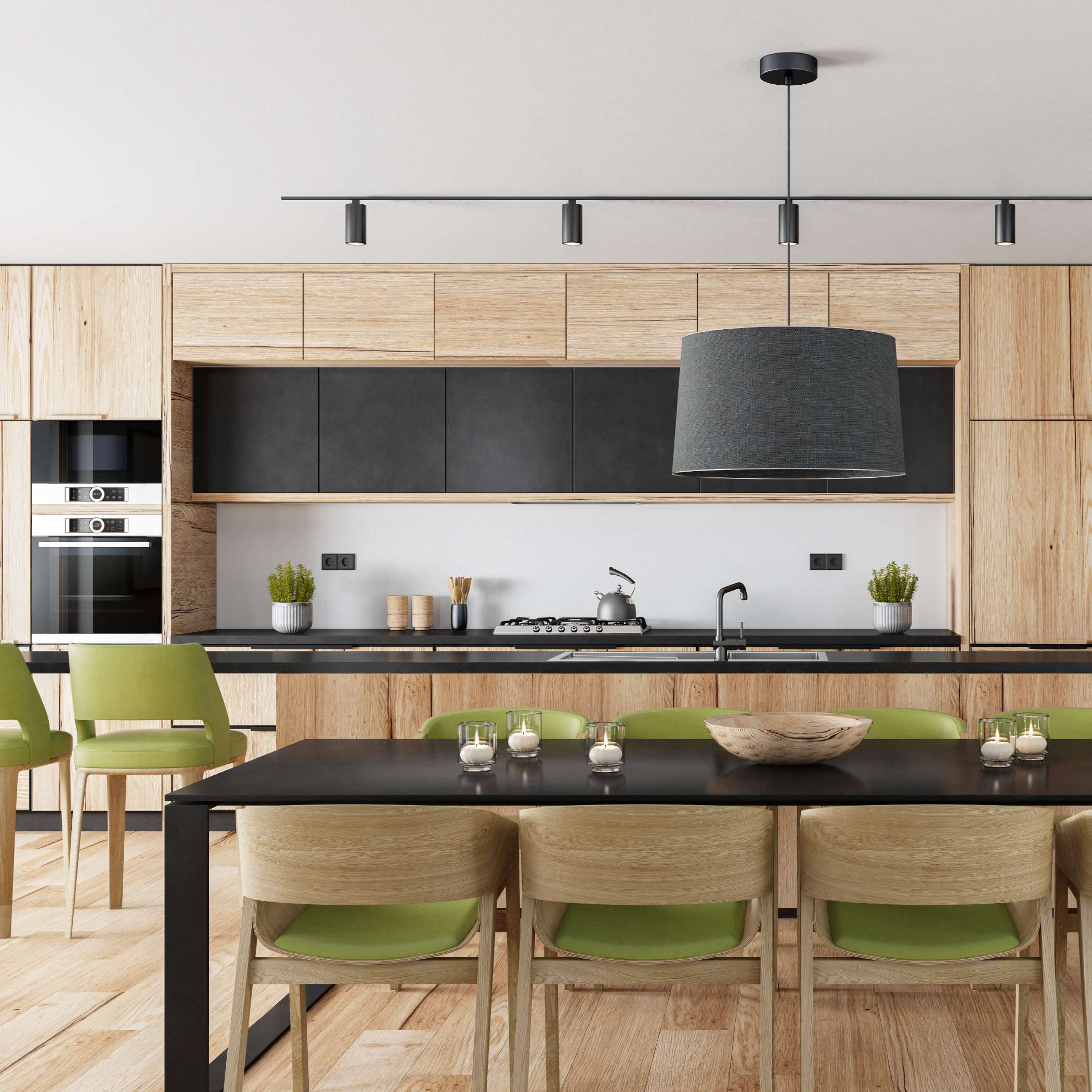
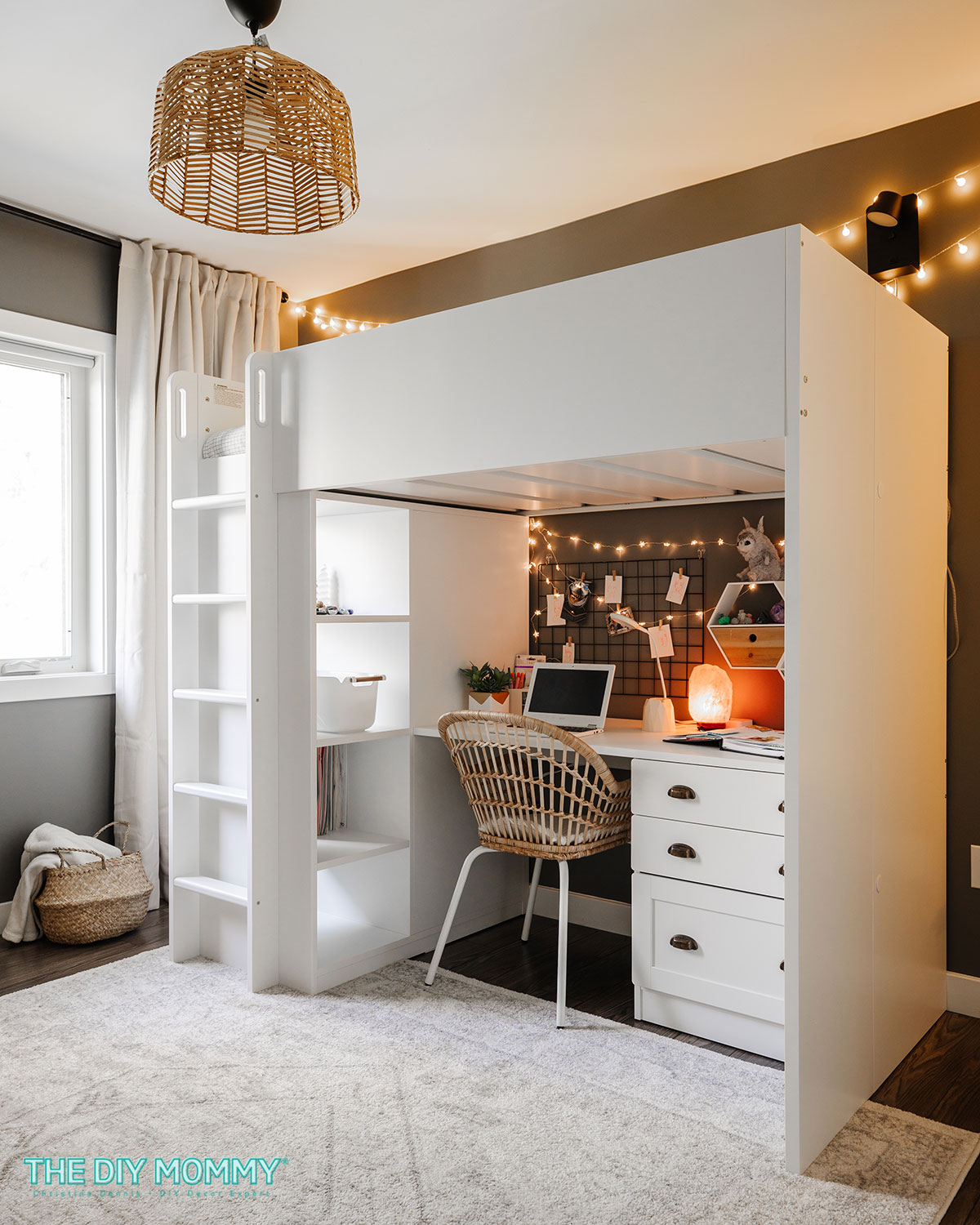



:strip_icc()/modernlyyou-0db03fd4613d4a2fa81eda94ef232c3e.jpeg)

